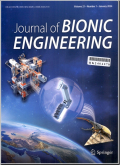Corrosion Properties of Ceramic-Based TiO2 Films on Plasma Oxidized Ti6A14V/316L Layered Implant Structured Manufactured by Selective Laser Melting
摘要Selective Laser Melting(SLM),one of the metal additive manufacturing methods in the powder bed,is frequently used in the pro-duction of 316L stainless steel biomaterial.In this study,the effect of duplex surface modification(metal additive manufacturing and plasma oxidizing)on the corrosion resistance of 316L was investigated.Ti6A14V layer was formed by additive manufacturing on 316L produced by selective laser melting method.The obtained layered Ti6A14V/316L samples were oxidized by plasma at 650℃-750℃and l h-4 h parameter conditions.TiO2 ceramic layer was formed on the Ti6A14V/316L structure by plasma oxidation process in several layer thicknesses.Corrosion properties of the TiO2 layer were determined by Open Circuit Potential(OCP),potentiodynamic polarization,and Electrochemical Impedance Spectroscopy(EIS)tests in Simulated Body Fluid(SBF)solution.Also,the surface characterizations of the samples were determined by the Vickers micro-hardness tester,Scanning Electron Microscopy(SEM),and X-Ray Diffractometer(XRD)analysis.From the results,it was obtained that the corrosion resistance of the plasma oxidized was higher than the untreated 316L and layered Ti6 A14V/316L samples.The best corrosion resistance was obtained under the 750℃and 4 h parameter conditions because of the increasing plasma oxidizing time and temperature.
更多相关知识
- 浏览31
- 被引0
- 下载0


相似文献
- 中文期刊
- 外文期刊
- 学位论文
- 会议论文



 换一批
换一批 换一批
换一批



